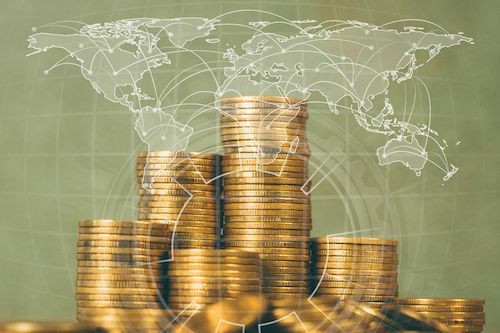
European Tensions, BOE Moves, PCE Data All Conspire to Raise Uncertainty
It’s been a bit of a mixed week for gold, silver, and the markets. It has seen President Putin raise the stakes in the Ukraine war by declaring the Donetsk, Luhansk, Zaporizhzhia and Kherson occupied areas of the Ukraine as integral parts of Russia following what have been seen as extremely dubious hastily organized referenda in these oblasts seemingly supporting this apparent annexation of territory following the example of Crimea. This is notwithstanding that Russia is not even wholly in control of some of these so-called independent republics!
With these regions now seen by President Putin as an integral part of Russia, he is likely to present a Ukrainian assault on them as an invasion of Russia itself. That could give him the excuse to raise the stakes massively and if this is the case, who knows what the response would be? There could be massive safe haven implications for the gold price in particular.
Meanwhile, the Bank of England (BoE) has been forced to intervene to protect the UK economy following a controversial budget from the incoming new Truss Administration, which is seen by some as a return to Quantitative Easing. This has raised the specter of similar moves needing to be undertaken elsewhere and created a degree of mayhem in the markets accordingly.
Inflation seems to be continuing to be a major problem in the US and globally. The latest Personal Consumption Expenditure Index (PCE) data – the Fed’s preferred inflation measure – has come in showing continuingly strong inflation readings, not only at the overall rate, but perhaps most worryingly at the core level too.
With the BoE’s move suggesting perhaps that a more dovish approach might also be considered at the next FOMC meeting at the beginning of November, the latest Fed watch figures do suggest the markets feel that an easing of the likelihood of a 75 basis point Federal Funds interest rate increase being imposed has fallen down to around 55% from around 75% earlier. Even so this foresees an aggressive Fed approach is still favored, but its perceived likelihood could fade further as the meeting date, still about a month away, approaches. What has happened in the markets over the week has been a little more volatility in all areas as the various data has been digested and analyzed.
Overall gold and silver prices have come back from their low points and have advanced regaining some of their lost ground overall, but not sufficiently so for one to remain confident that this recovery is sustainable. Equities have mostly continued weaker, while bitcoin has pretty much ended the week where it started it, after an up and down movement. It certainly isn’t showing any serious signs of recovery as yet.
The dollar has fallen back a little, after earlier gains, which has probably accounted for the better gold and silver prices, at least in part. It is difficult to predict what will happen short term given the continuing volatility and uncertainty. Europe does seem to be managing to reduce its reliance on Russian oil and natural gas as pipelines from Norway and Azerbaijan come on stream, so perhaps we can anticipate a further weakening of global energy price pressures which would be welcome as far as overall headline inflation rates are concerned, although oil prices are trading higher again in Europe early on Monday. However, as we have pointed out before, it is the rise in the core inflation rate which has to be most concerning.
Fed interest rate raising policy should be able to have some impact on this, but this may take time to take effect, so there is the prospect that the Fed will remain on target with its projected rate increase program for now. Perhaps, though, the likelihood of the 75 basis point increase at the November FOMC meeting could be eased a little to 50 basis points which would have the markets breathe a sigh of relief and could affect them positively in the short term at least, but the odds still marginally favor the higher 75 basis point rise.
Government statistics have confirmed that the US economy was in a technical recession in the first half of the current year with Q2 GDP falling 0.6% after a Q1 decline of 1.6% making for two successive negative quarters of GDP. With inflation remaining at a high level, we could anticipate a continuing GDP decline, although so far employment has been holding up well so any recession is proving to have only a relatively mild effect. But the longer the recessionary trend persists, the deeper the impacts are likely to become.
It would thus be wise to take heed of the warnings noted in my previous article from the mega-investors quoted and avoid equities until the economy has truly come out of its recessionary phase, which may not be for some time yet. Be sure to avoid the occasional short-lived rallies which will occur. Keep an eye too on the fluid European war situation.
Moves by the erratic and somewhat unpredictable President Putin to escalate the Ukraine war could have a dramatic effect on gold and silver prices, even if only in the short term. We are still mired in uncertainty which is probably equity and bitcoin negative and gold and silver positive for now, but this could turn around rapidly should the Fed change course to switch its priority from inflation control to economic growth protection.






